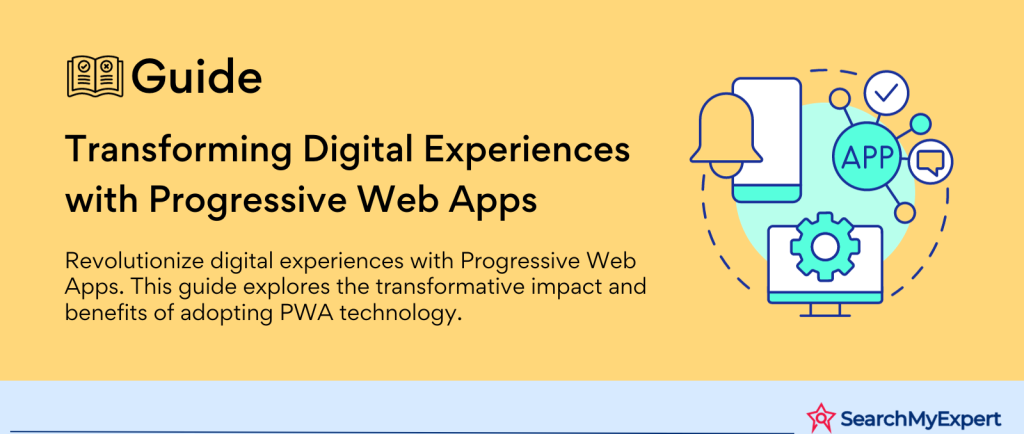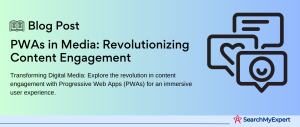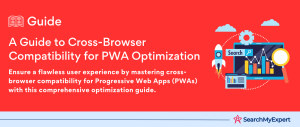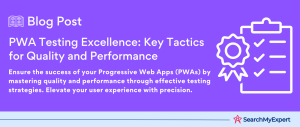Progressive Web Apps: The Future of Web and Mobile Experiences
In today’s fast-paced digital world, the lines between websites and native applications are increasingly blurring. At the forefront of this evolution are Progressive Web Apps (PWAs), a revolutionary technology that combines the best of both worlds. PWAs are essentially websites that offer functionality traditionally available only to native apps. This innovative approach offers numerous benefits to both users and developers, such as offline access, faster loading times, and enhanced user engagement.
What are Progressive Web Apps?
At their core, Progressive Web Apps are a blend of web and mobile app experiences. They are built using common web technologies like HTML, CSS, and JavaScript, but behave much like an app. PWAs run in a web browser but offer functionalities such as working offline, receiving push notifications, and accessing hardware features, which were once exclusive to native apps.
Key Benefits of PWAs
For Users:
- Offline Access: PWAs can be accessed without an internet connection, providing uninterrupted user experiences.
- Faster Loading:
Leveraging service workers, PWAs load content faster, even in low-network conditions. - Engagement: Features like push notifications enhance user engagement, keeping them connected with the app.
For Developers:
- Ease of Development:
PWAs are developed just like a website, which simplifies the development process. - Cross-Platform Compatibility:
They work across various platforms, eliminating the need for different versions for iOS and Android. - Improved Performance: Thanks to caching and other optimization techniques, PWAs offer a smoother and faster experience.
The Evolution of PWAs
The concept of PWAs has been around since 2015, but it has gained significant traction in recent years. Initially proposed by Google, PWAs were created to bridge the gap between web and mobile app experiences. Over time, major tech players like Apple and Microsoft have embraced this technology, leading to its widespread adoption. This growing popularity is a testament to the increasing need for seamless, cross-platform, and efficient digital experiences.
Core Principles of Progressive Web Apps
Progressive Web Apps (PWAs) are not just about combining web and mobile app features – they are built on a set of core principles that ensure a high-quality user experience. These principles include the use of a Service Worker, HTTPS, Responsive Design, and the Manifest file. Each of these elements plays a crucial role in making PWAs efficient, secure, and user-friendly.
Service Worker: The Heart of PWAs
Key Features:
- Offline Functionality:
Service Workers allow PWAs to load and perform functions without an internet connection. - Push Notifications:
They enable PWAs to send timely, personalized notifications to users, even when the app is not active. - Background Sync:
This feature allows the app to synchronize data in the background, ensuring up-to-date content.
Impact on User Experience:
Service Workers profoundly enhance the user experience. They ensure that users can access content anytime, boosting engagement and reliability.
HTTPS: Ensuring Security and Trust
Key Features:
- Secure Connection:
HTTPS encrypts data between the user’s browser and the server, protecting sensitive information. - Improved SEO:
Search engines like Google prioritize secure websites, which means PWAs using HTTPS are more likely to rank higher.
Impact on User Experience:
A secure connection builds user trust. With HTTPS, users are assured that their data is protected, making them more likely to use the PWA.
Responsive Design: Universal Compatibility
Key Features:
- Flexibility: PWAs are designed to adapt to any screen size, whether it’s a desktop, tablet, or mobile.
- Consistent Experience: Users receive the same functionality and visual experience across all devices.
Impact on User Experience:
Responsive design means no matter what device a user is on, they get a seamless and consistent experience, enhancing usability and satisfaction.
Manifest.json: The Blueprint of PWAs
Key Features:
- App Metadata: It defines the app’s name, icons, and appearance on the home screen.
- Offline Capabilities:
The Manifest file can specify which resources should be available offline.
Impact on User Experience:
The Manifest file is essential for making a PWA feel like a native app. It allows the PWA to be added to the home screen and ensures that essential features are available offline.
Enhancing User Experience with Progressive Web Apps
Progressive Web Apps (PWAs) offer a superior user experience compared to traditional websites. By leveraging modern web technologies, they provide features that were once exclusive to native apps. These capabilities include fast loading times, push notifications, enhanced discoverability, and a seamless offline experience.
Fast Loading Times: Instant Engagement
Offline Access and Cached Resources:
- Instant Loading: PWAs use service workers to cache important resources, enabling them to load instantly, even in low-network conditions.
- Reduced Data Usage:
By caching content, PWAs minimize data usage, which is particularly beneficial for users with limited data plans.
Impact on User Experience:
The speed and efficiency of PWAs create a smooth, frustration-free browsing experience, keeping users engaged and reducing bounce rates.
Push Notifications: Keeping Users Informed
Timely Updates:
- Direct Engagement: Push notifications allow PWAs to send updates and alerts directly to a user’s device, enhancing engagement.
- Personalization:
These notifications can be personalized based on user preferences and behavior.
Impact on User Experience:
Push notifications keep users connected and informed about important updates, offers, or reminders, enhancing the overall value of the app.
Enhanced Discoverability: Homescreen Access
Easy Accessibility:
- Installable:
Users can easily add PWAs to their device’s home screen, just like a native app. - No App Store Required:
Unlike traditional apps, PWAs don’t require downloading from an app store, making them more accessible.
Impact on User Experience:
Having a PWA on the home screen increases its visibility and accessibility, encouraging more frequent usage.
Seamless Offline Experience: Always Accessible
Uninterrupted Access:
- Offline Functionality:
Users can access the content and features of PWAs even without an internet connection. - Consistent Experience: Offline mode ensures that the user experience is not compromised due to connectivity issues.
Impact on User Experience:
The ability to use the app offline significantly enhances the user experience, ensuring that users always have access to the content and features they need.
Progressive Web Apps: A Game-Changer for Developers
Progressive Web Apps (PWAs) are not just beneficial for users; they offer a plethora of advantages for developers as well. The ease of development, cost-effectiveness, wider reach, and improved SEO make PWAs an attractive choice for developers aiming to create efficient, engaging, and accessible web applications.
Reduced Development Time: Efficiency with Familiar Technologies
Leveraging Web Technologies:
- Familiarity: PWAs are built using standard web technologies like HTML, CSS, and JavaScript, which are familiar to most web developers.
- Single Codebase: Instead of maintaining separate codebases for different platforms, developers can use a single codebase for PWAs.
Impact on the Development Process:
This familiarity and reusability significantly reduce development time and effort, allowing for quicker deployment and updates.
Lower Distribution Costs: Economical and Broad Reach
Bypassing App Stores:
- No Submission Fees:
PWAs don’t need to be submitted to app stores, eliminating the associated costs. - Direct Updates:
Updates to PWAs are deployed directly on the web server, avoiding the app store approval process.
Impact on Market Reach:
With lower distribution costs and direct access to users via the web, developers can reach a wider audience more economically.
Improved Reach and Engagement: Enhanced User Retention
Increased Discoverability:
- Web Presence:
Being on the web, PWAs are easily discoverable through search engines. - Linkable: Unlike native apps, PWAs can be shared and accessed through simple URLs.
Impact on User Engagement:
The easy discoverability and accessibility of PWAs lead to higher user retention and engagement, benefiting developers through increased usage.
SEO Benefits: Higher Visibility in Search Results
Optimized for Search Engines:
- Search Engine Friendly:
PWAs are indexable and SEO-friendly, leading to better visibility in search engine results. - Performance Optimization: The fast loading times and responsiveness of PWAs contribute positively to SEO rankings.
Impact on Visibility:
Improved SEO means PWAs are more likely to appear in top search results, attracting more users and traffic to the application.
Step-by-Step Guide to Building a Progressive Web App
Developing a Progressive Web App (PWA) involves a series of strategic steps to ensure it delivers a seamless, app-like experience on the web. From choosing the right framework to configuring the essential files, each step is crucial in crafting a successful PWA. Here’s a guide to get you started on your PWA development journey.
Choose a Suitable Framework
Exploring Options:
- Angular:
Known for its robustness, Angular is ideal for complex PWAs. - React:
React’s component-based architecture makes it a good choice for dynamic PWAs. - Vue.js: Vue.js is great for developers seeking simplicity and performance.
Decision Criteria:
- Project Requirements:
Choose based on your app’s complexity and functionality. - Developer Expertise:
Consider the team’s familiarity with the framework.
Implement Service Worker
Managing Offline Functionality and Push Notifications:
- Caching Resources:
Service workers cache app resources for offline use. - Background Sync:
They also manage data synchronization in the background. - Push Notifications: Implement push notifications to enhance user engagement.
Best Practices:
- Test Thoroughly:
Ensure the service worker behaves as expected in various scenarios. - Regular Updates: Keep the service worker updated to handle new content efficiently.
Optimize for Responsiveness
Ensuring a Smooth Experience Across Devices:
- Media Queries:
Use CSS media queries to adjust layouts for different screen sizes. - Fluid Grids:
Implement fluid grid layouts for flexibility across devices. - Touch Gestures:
Ensure touch gestures are smoothly handled, especially for mobile users.
User Interface Considerations:
- Consistency: Maintain a consistent UI/UX across different devices.
- Performance:
Optimize images and assets to ensure fast loading times.
Configure manifest.json
Defining App Metadata and Install Options:
- App Details:
Include the app name, icons, and theme colors. - Display Options:
Set how the app appears when launched from the home screen. - Offline Capabilities:
Define which resources are available offline.
Key Points:
- Clarity:
Make sure the manifest file is clear and accurately represents the app. - Testing: Test on different devices to ensure the manifest file works as expected.
Real-World Success Stories: Progressive Web Apps in Action
Progressive Web Apps (PWAs) have been transforming the digital landscape across various industries. Many well-known companies have leveraged PWAs to enhance user experience, increase engagement, and improve performance, especially in low-bandwidth environments. Let’s explore some standout examples of successful PWAs.
Forbes: Revolutionizing Content Consumption
Features and Benefits:
- Offline Article Access: Forbes’ PWA allows readers to access articles even when they are offline.
- Personalized Notifications: Users receive notifications tailored to their interests, increasing engagement.
Impact:
- Forbes reported an increase in reader engagement and time spent on the site after implementing their PWA.
- The PWA format helped Forbes reach a wider audience, including those with limited internet access.
Pinterest: A Native-Like Experience on the Web
Features and Benefits:
- Offline Image Browsing: Pinterest’s PWA allows users to browse images even without an internet connection.
- Saving Functionality:
Users can save images to their boards offline, which syncs up when they go online.
Impact:
- Pinterest saw a significant increase in user engagement and time spent on the app.
- The PWA provided a smoother, more app-like experience, attracting more users.
Twitter Lite: Optimized for Low-Bandwidth Environments
Features and Benefits:
- Lightweight: Twitter Lite is designed to be fast and efficient, even in low-bandwidth situations.
- Feature-Rich:
Despite being lightweight, it offers a full range of Twitter features.
Impact:
- Twitter Lite led to an increase in tweets sent and a decrease in bounce rates.
- It was particularly effective in regions with slower internet connections, making Twitter more accessible globally.
Progressive Web Apps: Shaping the Future of Digital Interaction
As we conclude our exploration of Progressive Web Apps (PWAs), it’s clear that they represent a significant shift in the web and mobile app landscape. PWAs blend the best of both worlds, offering the ease and reach of the web with the engaging experience of a native app. This hybrid approach has a vast potential for shaping the future of digital interaction.
Recap of Key Points:
- Enhanced User Experience:
PWAs provide fast loading times, offline access, push notifications, and a seamless, app-like experience. - Benefits for Developers:
They offer reduced development time, lower distribution costs, improved reach, and better SEO performance. - Real-World Success: Examples like Forbes, Pinterest, and Twitter Lite highlight the practical benefits and impact of PWAs across various industries.
- Core Principles:
The foundation of PWAs lies in their core principles, including the use of service workers, HTTPS, responsive design, and manifest files.
The Future of PWAs:
- Continued Evolution: As technology evolves, we can expect PWAs to become even more advanced and feature-rich.
- Wider Adoption: With their numerous benefits, more businesses and developers are likely to adopt PWAs.
- Potential in Emerging Markets:
PWAs have a unique advantage in regions with limited internet connectivity, potentially opening up new markets.
Encouraging Exploration and Adoption:
- For Businesses:
Businesses should consider the potential of PWAs to reach a wider audience and provide a superior user experience. - For Developers: Developers should explore the opportunities PWAs present for creating innovative, efficient, and user-friendly web applications.
- For Users:
Users can look forward to a future where access to digital content is seamless, fast, and more reliable, regardless of their device or connectivity.
Conclusion:
Progressive Web Apps (PWAs) are more than just a technological advancement; they are a paradigm shift in how we experience the web and mobile applications. By seamlessly combining the accessibility of web browsers with the engaging experience of native apps, PWAs are setting new standards in user experience and digital interaction. For developers, they offer a streamlined, cost-effective approach to app development, while businesses can leverage their wide reach and improved engagement. As real-world examples like Forbes, Pinterest, and Twitter Lite demonstrate, the potential of PWAs is vast and varied across industries. As we move forward, the adoption and evolution of PWAs will undoubtedly play a pivotal role in shaping the digital landscape, making them an essential area for exploration and innovation in technology.
Shape your digital future with our Progressive Web App Company.
Table of Contents
Toggle






